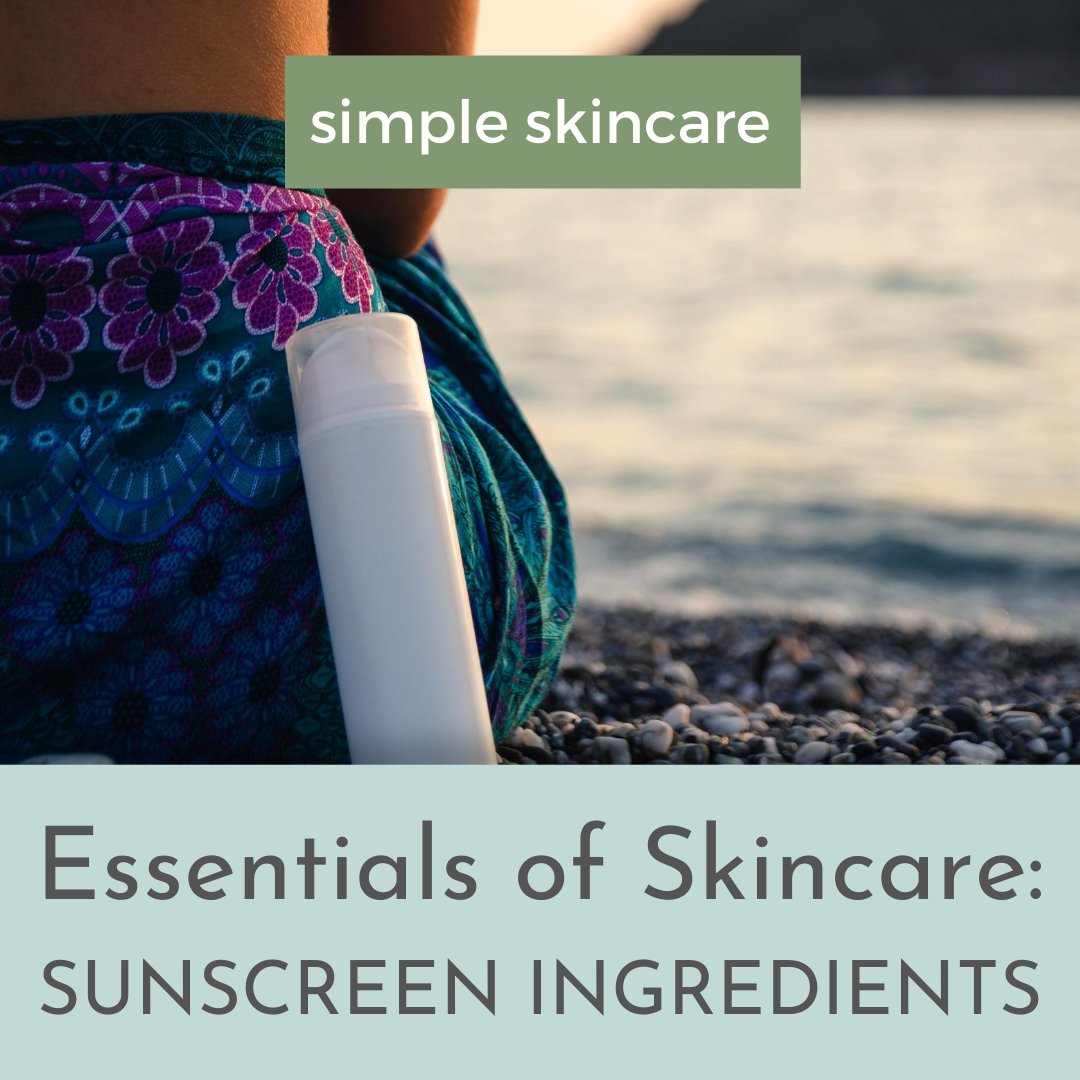 August 6, 2019
August 6, 2019
Remember when I taught you all about UV rays in my Essentials of Skincare: Sunscreen post? Oh, do you need a refresher? Go read it now.
I’ll wait. Tap, tap, tap. No worries, take your time, I’ll still be here.
Okay… so now that you recall how we are trying to protect against the damage UV rays cause to our skin, let’s discuss what ingredients are used to provide that protection. I know all you really want to know is which is the best sunscreen and where to get it but I need you to be armed with information so you can make decisions that best fit your lifestyle.
You have probably heard the terms Physical and Chemical sunscreens before. But what do those terms mean exactly?
Physical vs. Chemical Sunscreens
Physical sunscreens, also referred to as mineral, protect by creating a shield on your skin blocking sun rays from causing damage. Protection starts immediately upon application. There are only 2 options for Physical sunscreen ingredients:
- Titanium dioxide
- Zinc oxide
Chemical sunscreens absorb UV rays and scatter them into tiny pieces so they can do no harm. These ingredients need time to activate in order to provide protection, which is why it’s important to apply 15 minutes prior to sun exposure. The most commonly used chemical ingredients in SPF are:
- Avobenzone
- Ensulizole
- Octisalate
- Homosalate
- Octocrylene
- Octinoxate
- Oxybenzone
Misinformation about Sunscreen Ingredients
There has been a lot of information floating out on the interweb about the dangers of sunscreen ingredients. It has been said these ingredients may penetrate the bloodstream making it unsafe for pregnant or breastfeeding women or those with compromised immune systems. Some articles suggest these ingredients might be hormone disruptors or worse cause cancer.
But none of my research proved that to be true.
If you have been following me for a while you know that I am not a fan of fear-mongering websites or blog posts. I don’t believe that product companies are trying to poison us. But I want you to be smart about what you put on your skin and I want you to have the full picture of what is available to you.
Chemical sunscreen ingredients are produced in a lab.
As a result, they are often the most stable therefore preventing skin irritations or allergic reactions. The most popularly used chemical ingredient is Avobenzone. My research has shown it to be safe to use. The FDA requires Avobenzone to be formulated with stabilizers for it to keep from breaking down and causing harm. Although some people have reported experiencing skin irritation from these stabilizing ingredients. That being said… any skincare ingredient has the potential to cause skin irritation, hence why there are so many different products on the market.
I am not anti-synthetic, I love ingredients that get a helping hand from science. I, myself, use products that have some synthetic ingredients incorporated in and I don’t worry about them doing harm. The FDA has stated that the chemical ingredients are safe for use by everyone but because of public concerns, they are asking for more safety testing to find out how much can the skin actually absorb in and if absorbing sunscreen affects the skin or body.

The main problem with Zinc and Titanium Dioxide is the ease of spreadability.
Minerals Zinc and Titanium Dioxide are your Physical powerhouses. Remember in the 80s when they added fluorescent color to them and the lifeguards would wear it on their nose? I wonder what they used on the rest of their body.
Physical sunscreens can be thick and may block pores causing congestion or milia. On the plus side, they are gentle and don’t tend to irritate sensitive skin conditions like rosacea. Nanotechnology has allowed the product to feel lightweight, making it easy to blend and not feel greasy. They are the main ingredients for powder-based sunscreens. Which, many of you know, are my favorite. So you can use Zinc or Titanium Dioxide without that 80s lifeguard look – unless you’re into that.
Non-nano particle Zinc and Titanium Dioxide as they are better for the ocean environment.
Nanotechnology is a conversation for another blog but environmentalists prefer non-nano particle Zinc and Titanium Dioxide as they are better for the ocean environment as they don’t breakdown and cause harm to the oceanic ecosystem.
Regardless if you prefer a physical sunscreen or chemical, what we do know for sure is… broad-spectrum sunscreen is a MUST to protect against skin cancer, skin damage and to help the skin age well.
In my treatment room, I recommend Hale & Hush SPF 30 using a natural Zinc Oxide for broad-spectrum protection. If you prefer a chemical sunscreen I have available the Anna Lotan Gel Spf 30. You can order it directly from me via text or email.
Questions?
If you have questions about the ingredients in the sunscreen you are currently using book here for a free discovery call and I will make sure the product is appropriate for your skin.




Leave a Reply